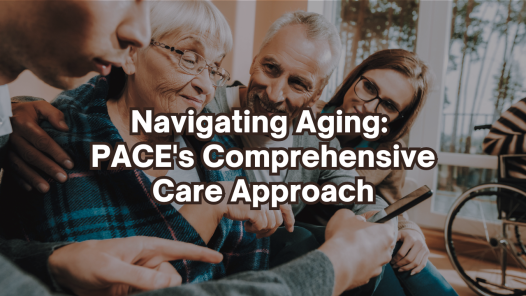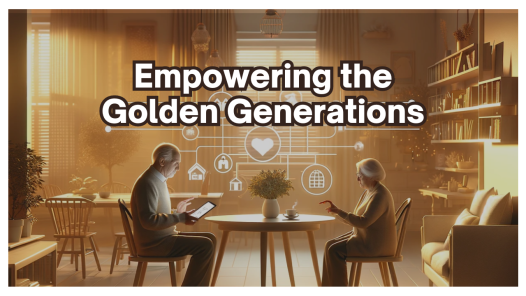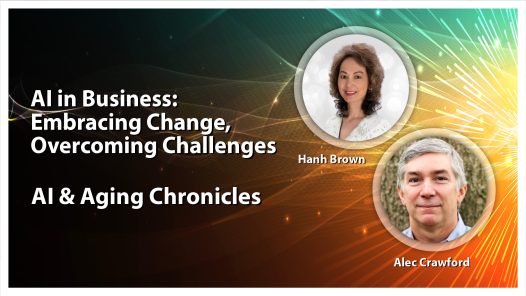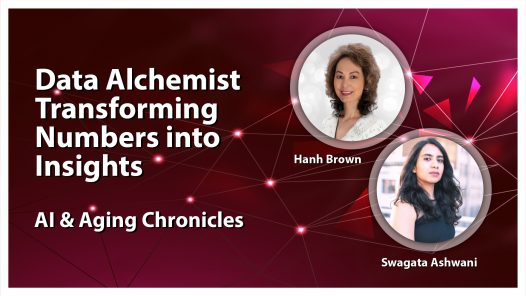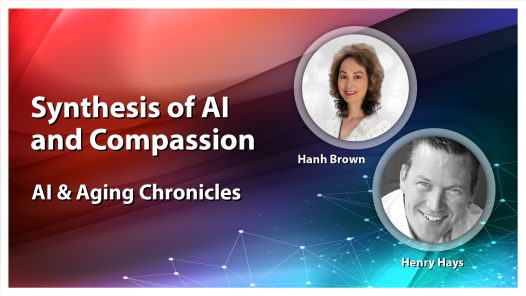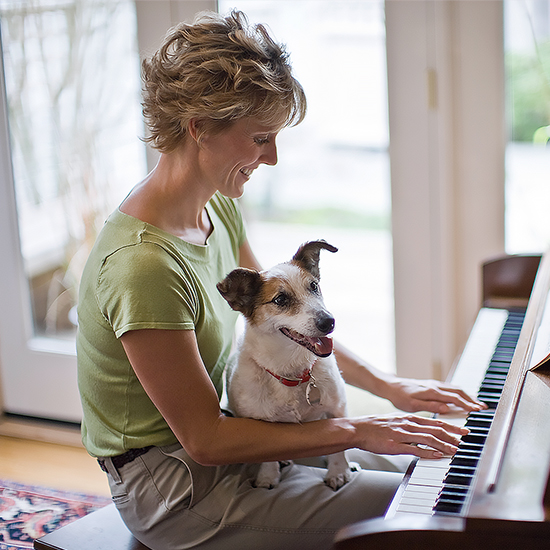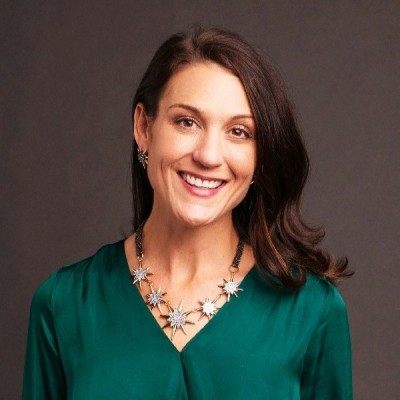
Sara Kyle, Founder and Principal for LE3 Solutions
Sara Kyle, Ph.D. has spent the last 12 years researching, designing, writing, and implementing resident well-being programs across the continuum of care. From leading and overseeing programming across 108 skilled nursing, assisted living and memory care communities to overseeing the charge for Holiday Retirement to transform their resident program in 260 communities, Sara thrives in challenging settings. She is relentless when it comes to urging individual point solutions to integrate and share resident data in one location. While best intentions and knowledge at the corporate level craft well-suited programs, the most effective programs originate from research and collaboration with residents, staff, families, and future prospects.
When staff and residents are involved in creating a program or approach; interest, adoption and sustainability are remarkably higher. Successful programming is not just about a satisfaction score, rather quality of life beyond the basics of food, shelter and an expected level of care. If data collection is aimed to note participation of categorized activities, this is only one piece of the puzzle behind effectively measuring engagement.
Sara is widely known and respected in the industry. She presents at national conferences, pens articles in notable publications, and serves on various advisory boards.
Furthermore, she is fervent and highly skilled at building morale, delivering education, and bridging the gap between the executive team, community management staff and front line workers when it comes to who is responsible for resident programming.
Sara’s Links:
LinkedIn: https://www.linkedin.com/in/sara-kyle-phd-0972504/
LE3 Solutions: https://www.le3solutions.com/
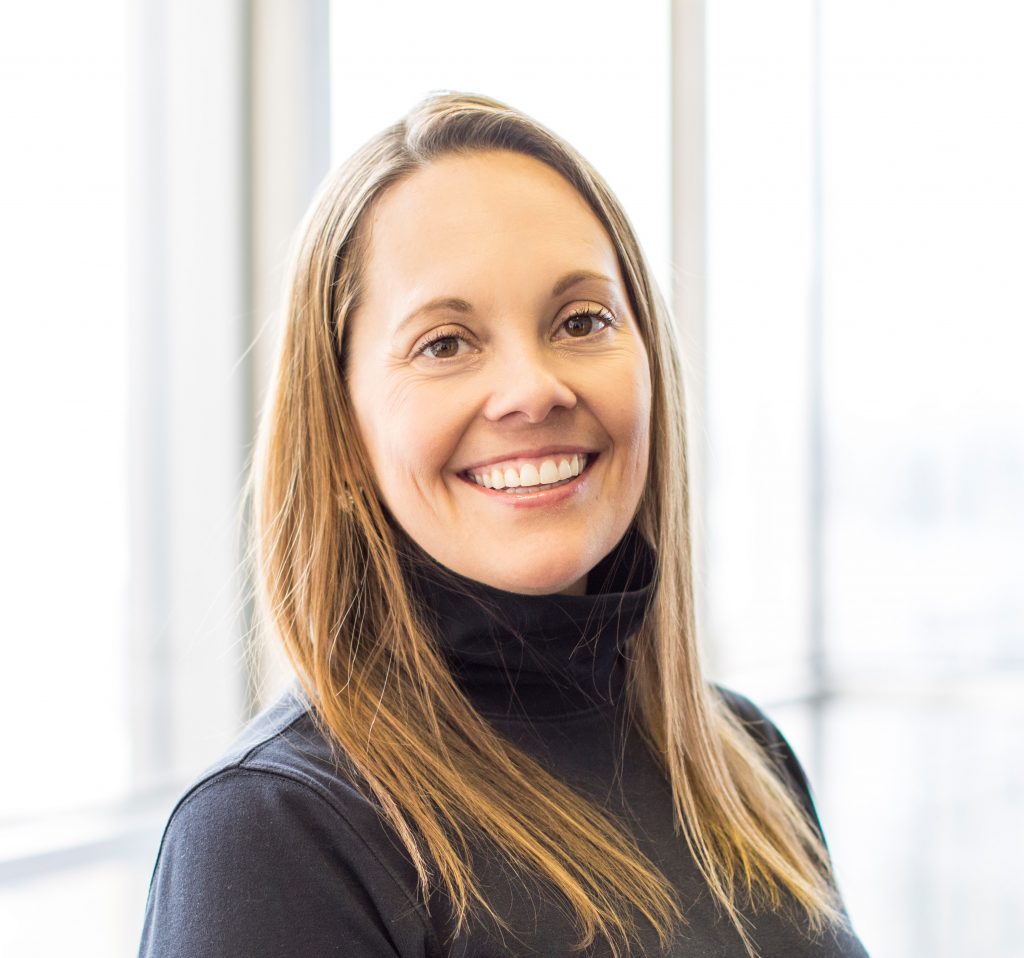
Kelly Stranburg, Principal at LE3 Solutions
Kelly Stranburg, M.Ed., CEP, CSCS, CDP has worked with aging adults for over 20 years, with 12 of those specific to the senior living industry. Over the years Kelly has supported over 30 CCRCs and many AL/MCs. Her most successful roles have been positions she has created from the ground up which has enabled her to analyze, identify needs and gaps, and create and implement solutions for the greater good of the residents which in turns supports the operators.
In a time of increasing competition for senior living communities, comprehensive wellness programs can help organizations remain financially fit by enhancing resident health and happiness and strengthening staff satisfaction. In addition, the need to simply connect with others, as we have seen to be of even greater importance during the pandemic, can be facilitated in safe and effective manners via an effective wellness program.
Kelly is the creator of award-winning Argentum Best of the Best Wellness Program for 2010, 2011, and 2012. She has been a featured columnist in the Journal on Active Aging and a selected speaker at national senior living and active aging conferences.
Kelly’s Links:
LinkedIn: https://www.linkedin.com/in/kelly-stranburg-m-ed-cep-cscs-cdp-457b204b/
LE3 Solutions: https://www.le3solutions.com/
Topics discussed:
- Discuss how the pandemic has elevated the value of resident engagement and the criticalness of connecting with family and friends
- Discuss why the pandemic has allowed residents a greater voice in what is offered and how moving forward it should continue to be embraced
- How has the pandemic shifted the approach to activities?
- Other trends and solutions which extend longevity
Hanh Brown: [00:00:00] Today we have two guests on the program, Sarah Kyle and Kelly Strandberg, both our principals at the L three solutions and have rich histories in the senior living space. So I can’t wait to talk to them about their thoughts on the communal living and how the pandemic impact that their roles. So Sarah and Kelly, thank you so much for being on rumor living today.
[00:01:33] So, how are you?Sara Kyle: [00:01:35] Good. Thank you for having me.
Hanh Brown: [00:01:38] by having you share some background information, like where you’re from and what is your expertise lie and how did you get interested in this field? So maybe Sarah, could you share with us?
Kelly Stranburg: [00:01:49] Sure. So Sarah, Kyle, I am actually in Orlando, Florida right now. And probably in the senior living space, as we know it for the last 13 years, but my interest started during college doing some internships.
[00:02:04] I started doing cardiac rehab and just stayed with that thought. I was going to be a professor for a while and then realized that I. Much more like to being on the programming side with older adults and it’s segwayed it’s over different organizations, different operators, and actually was career change halt if you will, during COVID and so stepped out and started my own consulting business as a result of that layoff.Hanh Brown: [00:02:32] Good for you. I think it’s a great time to reboot or restart a new adventure. So that’s awesome. So how about you, Kelly?
Sara Kyle: [00:02:39] It’s also been in the senior living space for about 13 years. My entry into working with an aging population happened well, lifeguarding, a senior splash water aerobics program, and it really made me realize.
[00:02:57] No matter our age, we are all the same. We still have friendships and connections and we’re vibrant and we share humor and we share grief and getting to know the individuals in that program really just catapulted me into a very different direction professionally. And it’s why I went back to graduate school and really found myself working primarily with chronic conditions and chronic diseases. [00:03:23] And then I entered into the senior living space using that background. And here we are today partnered up and really focusing on resident engagement and resident wellbeing.Hanh Brown: [00:03:34] Thank you. Thank you so much for your time to be here in resident engagement. There’s nothing more important than that right now.
[00:03:41] So thank you. What do you think some of the most important items to keep in mind when creating engagement programs for the residents? What’s your thought on that?Sara Kyle: [00:03:52] You’re, you’re very good.
Kelly Stranburg: [00:03:54] The more and more I get into this, the more and more I realized that younger, old it’s all people. And so I almost respond to that question of what is most important when you think about how you want to be engaged in life and in order for your engagement to really happen.
[00:04:10] There has to be a connection to it in order for there to be a connection, there has to be individuality. And so it’s really is doing the homework upfront to know who that person is and how they want that engagement there’s group settings that work for people. But the assumption that older people, 65 plus all like. [00:04:30] This black and white movie or all like this big band or something from the a decade is pretty limiting and it, yes, it may be easier to do, but you miss that connectivity. So it all goes back to knowing an individual. And finding the time to get to know them.Hanh Brown: [00:04:49] That’s very true. I guess, regardless of the age, we all need a sense of connection engagement.
[00:04:56] It varies from individuals, but making that bond or the sense of belongingness it’s important more so now than ever. So do you have any thoughts on that, Kelly?Sara Kyle: [00:05:08] I think when you. To what Sarah shared. When you take the time to really get to know the individuals, you can then start to identify. Are there people with similar interests in similar passions, and you can start to bring people together around those.
[00:05:25] Even during this time of the pandemic, we have figured out creative ways to connect people virtually to maybe through zoom calls and even doing some physically distance programs that people connect on. So it might be a discussion group. It might be something movement-based. We have one beautiful example of a resident in a community. [00:05:49] And this is when COVID-19 first started. She called up her son and said, Hey, I need you to teach me everything. Zoom. Because I have a feeling this might go on longer than we’re anticipating, and we don’t want to give up our morning coffee gathering and our evening cocktail hour. And she was able to then learn how to use that and teach a lot of her friends and peers and neighbors in the community so that they could continue that because that connection was so critical to them. [00:06:18] We have another example that we learned from an industry colleague where a gentlemen. When we started to see things level out, back over the summer, late summer, he went to the mail room and he saw a neighbor and he couldn’t recall that neighbor’s name. And that really bothered him because he hadn’t seen this person in months. [00:06:39] And he said no more, I’m going to be proactive. And they figured out how to have a virtual men’s dinner group. And so I think finding creative ways to connect people, whether it’s common interests or bonds, or just wanting to be with one another is critical. And then how do you layer in the appropriate solution? [00:07:01] Making sure we keep people safe at the same time,Hanh Brown: [00:07:04] first and foremost safety, right then engagement. And it’s a fine balance. I know there’s creative ways and I sure hope that as we move into the new year with the vaccines rolling out, that we truly go back to socialization. So it’s a process. It’ll take some time, but I, I I’m hopeful.
[00:07:23] So, how do you curate? And I know you touch on this and you cited some examples. So how do you curate activities for the programs that appeals to residents with a wide variety of backgrounds and interests and abilities? Do you have some kind of a systematic way because your audience it’s a why gamma folk?Kelly Stranburg: [00:07:44] I know that’s a great question. I think that is the hardest one. And the most daunting one is. How do you take the time? Most importantly is there has to be some type of repository. What we find is because it is so relationship based with staff. That so much of this information lies in the heads of the staff members.
[00:08:03] And don’t people do not think about their exit, but what we know happens is when one person exit that had all that information it’s lost. So all these rich stories and how to go about engaging people gets lost. It’s one thing to write it down. Writing it down on paper is better than nothing, but realistically we’re not going back and reviewing paper notes and communities. [00:08:24] So that is where technology really does come into play to drive this efficiency that you have to look at ways to capture that story and then use that story in daily operations. There’s so many different ways to do it. Once you start to get that, what I call the foundation of who is in your community. [00:08:44] Then you start to look at those interests. It’s, there’s some really cool stuff about music right now, the ideas that we just turned on music overhead, but what if you had a way to know the top 50 songs of people in your community? And that was the overhead music, that plate looking at ways to collect that information and then. [00:09:02] I think catapulted into the daily operations, whether that’s dining or excursions or outings is so important because it doesn’t just become this calendar. And here’s your activity time when you’re not doing something else, it all blends together.Hanh Brown: [00:09:16] Absolutely. So now, what are your thoughts on how the pandemic has elevated the value of resident engagement in the criticalness of connecting with family and friends?
Sara Kyle: [00:09:29] I think we have all experienced this personally. And even more so in communal living settings, we always knew how critical was. And that one of the benefits of being in a senior living housing setting was the social aspect. But we didn’t really, I don’t think we could have ever truly quantified it to this level until something.
[00:09:54] This catastrophic had occurred. And so we are seeing just time and time again, how important it is to not only figure out ways for our residents to connect with families and loved ones and friends, but also how important it is for them to connect with their neighbors and, and their peers within that community setting. [00:10:18] And I think initially, During the pandemic, it was, we’ve got to keep people connected with their families. Yes. And found very important. But what we started to discover from the residents. More than anything. It was when we were able to start, we had that small window of time where we did start to loosen some restrictions that they wanted to see each other. [00:10:40] And that was not anything we had initially anticipated. We thought people would be demanding to go off campuses and go see their loved ones that are, maybe are in their local communities or within a short drive. And they were like, no, we want to see each other. And to me, that speaks to the power of how important. [00:11:00] Community is, and how important these types of community settings really are and how much you start to value your peers and your neighbors and how they even become a version of your family. And so that became a much greater priority than we probably ever would have anticipated, but it was such a nice. [00:11:21] Thing to unearth and discover that they needed each other as much as they needed their loved ones.Hanh Brown: [00:11:26] Yeah, that’s true. I think in times of uncertainty and you, of course, first and foremost, you want to know where your family is. You want them to be near, but at the same time, you’re going to need the people next door to you.
[00:11:37] God forbid something happens and. They’re in the same place, the same situation in needing help if it comes up. So that’s a great point. So now do you think the pandemic has allowed the residents a greater voice in what the programs and the engagement opportunities are offered?Sara Kyle: [00:11:58] Absolutely.
Kelly Stranburg: [00:11:58] I think does tend to make, has, you can look at it two ways.
[00:12:01] You can look at the devastating impact. From everything business-wise operations and staffing, which is one way, but I think is started a new conversation around. The impact that this activity programming does have and how important it is. I also think that once something is always available to you, you start to become a little bit complacent and you maybe do not understand the impact that it has. [00:12:29] I think this is the best disruption that has happened because it has allowed it to this engagement world to be shut off. So it has propelled. For people, the importance of it. I think it was something that we just took as a nice to have, and everybody does it. It’s caused us all to rethink the impact and how we go about doing it because it, it was group focused prior to this. [00:12:56] And now it’s absolutely individualized. So it’s a great disruption. It’s unfortunate, but there’s so much that industry can learn so much. We’ve learned in this. I mean, things we did before, why, and now that we can’t do them, there has to be this creative innovation without dollars as well. That is a bonus.Sara Kyle: [00:13:16] I would like to add one other thing to what Sarah said that with the focus more on the individual, it’s also highlighted and showing us. That people are still very purposeful and able to be very autonomous in how they live their day-to-day life. And for so long as an industry, when we think about engagement, There’s always been that group program, calendar activities.
[00:13:43] And what we’ve really unearthed is that a lot of people have gone back to things. They’re very passionate about that they let go by the wayside because we were offering in catering to so many different interests and needs and stab a couple of residents from over the years. I still think. Close contact with, I have one individual. [00:14:04] Tell me I’m writing again. I’m painting again. I’m sewing. She was telling me how she made all these special pills for all her family members for Christmas. And so. Part of me feels is much as we, we need to make sure people aren’t isolating in experiencing the negative effects due to that. But there’s also some positives, positives that have come out of it. [00:14:25] And people are able to regain part of that creative side of who they are and passionate pursuits,Hanh Brown: [00:14:31] I think because of the ongoing. Changes easing back, shutting down. So perhaps we all, and not just the, the folks that the residents, maybe we’re just wanting to rely on what we have control over, as opposed to waiting for this program to set out or this activity, or maybe another reopening or another closure.
[00:14:54] I’m finding that to be true. Even with school aged kids, virtual school at homeschool, a hybrid. I don’t want to say the word numb, but they’re not relying on what’s upcoming anymore. So they adjusted to what they do have control what that’s a great idea. Folks. The residents rediscovering their talent, their passion, and that is something they have control over. [00:15:18] So that’s great. Now, can you explain why having a say is valuable for residents and let’s say moving forward, how can we continue to embrace this sort of input from the residents?Kelly Stranburg: [00:15:31] One of the best conversations I had in this space that really made me understand this need for people to still have their voice.
[00:15:40] One of my mentors, Dr. Bill, he started Dr. Thomas started this idea of a shouting and it seemed silly. And why would you bring all these people to get together and just shout, but they loved it. And so if you think about when people are moving into senior living, granted, there are some things. Some instances of voluntary where people know at 65, 70, 75, I that’s where I’m going. [00:16:00] I’m loaded my stuff up. They have the van and they moved in most of the time. It’s not that easy. And how I had this explanation is if you think about when you as an adult child, if you’re taking your parents to the doctor, the doctor, usually speaking to you about a condition as if the mom or dad is not there. [00:16:19] So I’m going to talk to you rather than talking directly to you and we answer your questions. If you fast forward in you look at when people live in a senior living, that conversation oftentimes is between adult child and the sales leader and the influencer and the resident. If you’re sitting back, I saw this with my mother-in-law. [00:16:36] We did the same thing and it wasn’t until I heard that in this funnel into senior living and how you get there most of the time, their voice is not heard. And if you do not find ways. To let that voice be heard when they first move into senior living, that trend continues, which I think is often the times of what do you want to do today? [00:16:58] What would you rather do? I don’t know. It’s whatever you want to do, whatever she wants to do, that’s fine with me. And so making sure that in this process, There is direct communication to that future resident to say, what do you want to do here? But continuing that it, one of the things that I used to think was okay, was once a month we’ll bring, did residence together. [00:17:20] We have a resident council meeting once a month for an hour that you have to create operational moments where the voice is continuously heard. Even if. We don’t know how to respond or it’s a hard conversation because some of them are going to be hard. Life is happening.Hanh Brown: [00:17:39] Yeah. Very tough conversation with your loved one.
[00:17:44] There a tough conversation with the caregiver. Let’s face it. It’s a tough journey transition. It doesn’t have to be, but the reality is it’s very tough and even more so now. So I think it just takes a special heart, whether it comes from the family member of the caregiver to really make the time to understand the person’s thinking why they are or why they’re hesitant. [00:18:08] Sure for obvious reasons that we know up, but still it takes a serving heart and opening ear to really spend the time and understand the individuals. And I think sometimes perhaps they’re silent is because. Society has treated them, shut them off, so to speak and it’s very wrong. And they’re just going along with that stereotype. [00:18:33] And that’s a different topic altogether, different topic, but I think it’s so easy for them to be silent because maybe underneath it all. They don’t feel that they have a reason why get used to this setting. I’m leaving a lot behind again. You don’t have to, it could be a new beginning. It could be making new friends, learning a new skill. [00:18:56] It takes a special setting, a group of people. To open that up. I’ve gone through with my mom and dad and, and it’s just an all over home tough journey. And I highly recommend for loved ones to have those conversations way before your parents are in their eighties. I’m in my mid fifties. And I recommend that we can bottle some of these conversation and give it to the children who are in their thirties and forties. [00:19:23] I think that will help them a lot and help their parents to know that they have choices. Thank you for sharing that. So now historically Sega living often approach activities and engagement with more is better type of mentality. How has the pandemic shifted this? And do you think this is a positive or a negative thing?Sara Kyle: [00:19:45] Love that question, hon. Yes. I had this epiphany very early on in the pandemic because what we were able to. To provide virtually and through an in-house TV channel was maybe 10 to 20% of what we were previously offering in-person and having this crazy robust calendar. And along that, along with that, we were also doing some consistent check-in calls with the residents of where I was still working at the time.
[00:20:20] And we discovered. That they’re like, Oh my gosh, we have more than enough going on. You guys are doing more than enough. And after three, four, five, six times of hearing that, it made me say what I was like, Oh my gosh, what have we done? That’s that more is better. What, where did this concept even come from? [00:20:40] And it made me realize, are we really, truly being thoughtful about, or intentional is a better word about what we. Provide on that program or on that calendar of offerings, what is the intention behind it? What is the purpose behind it? Are we discovering that when we learn about our residents and who they are as individuals. [00:21:04] Are we also learning what they still aspire to do? What still matters most to them when they rise each day, what do I want to do today? And are we providing that does not mean we need to provide 500 things? I don’t think so. And I think this is an opportunity for more independently led programs or resonant led program that doesn’t necessarily need to be scheduled out. [00:21:31] It also opens up the door for a lot more spontaneous. Yes. Happenings. I say all the time when I’m working with communities. Well, when you go home tonight after work, do you have things scheduled out at 7:00 PM, 8:00 PM, 9:00 PM. And people will look at me like, no, I’m like, then why do we feel we need to schedule out every single minute of the day. [00:21:53] Sarah and I had the good fortune to be part of a panel back in the spring. And we had a resident attend and he shared with us in the comments. I don’t like living in a community that feels to need, these are his words to spoonfeed me. Entertainment all day long. And that just hit me right here. And I was like, Oh my gosh, what have we done? [00:22:14] And so I think there is a significant opportunity to really move forward and be intentional. And if we’re going to keep talking about senior living is a place that is in alignment with longevity. We need to have things that we’re offering. That are evidence-based to support longevity. And I think we can start to weed out some of the low attended programs. [00:22:40] We can let residents go. We just give them the tools, the resources, the space, good do programs you want to do. And let’s be really thoughtful about what we. Promote and put out there from a programming standpoint.Hanh Brown: [00:22:53] Very true. So instead of bombarding them with too many choices, maybe it’s not even relevant or interests with them, perhaps be more thoughtful, intentional, and find a good fit.
[00:23:04] And it may take some time trial and error. And let them be the driver of what the program entails as opposed to just providing them to countless of activity. So it’s a very good point. Now, what other trends or opportunities are receiving senior living and the aging industries regarding tools and solutions for, to support longevity.Kelly Stranburg: [00:23:28] technology obviously comes into play.
[00:23:30] I think it is also been eye-opening to see how many people are open to technology. Blanket statements were not unusual. I all the residents here, they just don’t like technology. Maybe the louder boisterous ones are not keen on it. But what about all those people you are talking to every day and we’ve seen adoption rise quite high. [00:23:49] And the other part, I think, is the opportunities of the outside world who are now wanting to support people in senior living. Before there was no real awareness to it and right wrong or indifferent, those pictures of, or stories of people sitting behind glass windows tug at people’s heartstrings. And so the intergenerational and millennial and those generations are like, Oh, they’re just busy doing games. [00:24:15] They’re creating. Solutions for engagement and looking at this whole new interaction of older and younger. And I think it’s beautiful. So that’s where I see it. And of course, there’s going to be so many more when we look at telehealth and isolation and offerings, especially for accessibility is huge, right? [00:24:35] You can’t hand people devices, and then while all you have engagement,Hanh Brown: [00:24:38] Very true. So awareness of older adults and communal living is greater than ever. I think that right now we have a great platform in front of us to show how the industry is willing and able to innovate and respond in a manner that puts the residents and families.
[00:24:54] That’s a main focus. So how. Can we act upon this message to make sure that it is heard?Sara Kyle: [00:25:01] I think there’s a lot of steps to answer that question. I think. And Sarah just mentioned this. I think the storytelling, I think so much of senior living does not get shared to the greater public. The pandemic has put a spotlight on our industry.
[00:25:22] For unfortunately, to negative reasons or to add reasons and just like sharing that Sarah and I have shared today. We’ve had a lot of positives rise to the surface as well. And I think it’s the piece that has bothered us even pre pandemic that. Why don’t more people understand that senior living or communal living for aging adults can be a really positive environment and a lot of incredible stories come out of it. [00:25:56] You learn about people’s personal histories, their professional lives, their personal lives, the things that they have accomplished or overcome, and the bonds between staff and residents and how. That even get to know the families intimately because the families come in all the time and you’re getting to know them. [00:26:18] And so when there are tough times, you support one another and you may need to greet together. And I think there’s all these elements. Of our world that just never get highlighted. And it would, it’s like when you get a set of reviews, you could have 50 awesome reviews. It’s only going to be that one you recall. [00:26:38] Same in our industry. It’s been easy to always allow the catastrophic or negative or sad stories to rise to the surface. And why are we not touting the amazing experiences in positive events that come out of this? Type of setting and Sarah and I, and many of our peers and hon I’m sure you do too. We have piles of these incredible stories, Sarah and I could sit around for three days until resident stories with each other and never run drive it. [00:27:08] And they would be all amazing stories and some might evoke emotions, but they’re all amazing stories. And I think it’s that piece of our world that is missing. And I think if we could help that. And how right now, specifically senior living is actually a really safe place for a vulnerable or aging person in it. [00:27:31] In addition to that, look at all of this additional positivity that could surround that.Hanh Brown: [00:27:37] heartedly, believe that everything that you were saying, and then some, the folks who are in the senior living, it’s not a job. It’s a passion, it’s a serving heart. That’s the bottom line. We’re in a caring business, right?
[00:27:49] Despite what you hear, every one, every single person in this industry. They have a serving heart period. And let’s say, when you come in your loved one, come into a community. I don’t, although the title is caregiver, but I don’t see them as caregivers. I see them as an extended family that I have to entrust, or I want to entrust for I’m caring for my loved ones. [00:28:13] I couldn’t agree with you more.Kelly Stranburg: [00:28:15] as we were talking it. And Kelly, we had these aha moments. And what I took away from that is. As we need to tell their story, we need to have them tell their story, tell their stories. So peers hear that. And I think the power in that is how do you unite? Whatever level of care it is, right?
[00:28:33] Whatever lobbying party there is, or organization that is supporting the different levels of care. Uniting those together and letting the residents have this message, I think would be extremely more powerful than throwing marketing dollars and more at a message that looks the exact same for every organization or community. Just, I know that the most profound moments I have in this space are when residents talk to me, face-to-face. And they tell me about how to be a good mother, how to be a good wife, the times that you’re going to remember the most in life, you need to go home and be with your kids. Stop taking care of us. I don’t know how many times I’ve heard that. [00:29:12] Just the wisdom and being able to see that as strength and power and not frailty or older age through that spoken word.Hanh Brown: [00:29:21] Wow. I’m so glad that we connected. I echo that and I think that’s one of the driving force behind the boomer living is to bring stories and bring a journey like yours, bring it to light because I got to tell you every single one, I keep saying this, I’m going to say it again.
[00:29:36] Every single one of the folks who are in this industry, they all have a serving heart. They’re very compassionate, empathetic, and their goal is to how to better serve. This, this upcoming baby boomers and their parents. So I, I appreciate the opportunity to, to meet you on social media and to have this opportunity to talk to you and learn about your work. [00:29:57] Now, do you have anything else that you would like to share.Kelly Stranburg: [00:30:00] so much gratitude for the people who are now going into month eight? It’s been a hard year and I don’t think that we understand. Just the stress and the toll that it’s taken on these people, but they keep showing up to work every day. And I’m so proud to be a part of this industry.
Hanh Brown: [00:30:19] I am too. Thank you. Thank you so much. How about you? Do you have anything else to add Kelly?
Sara Kyle: [00:30:26] I would just like to add that. I just think this whole experience for people everywhere has only highlighted. How valuable and how critical relationships are, and that we need to cherish those and embrace the different ways we can to maintain them.
[00:30:48] And whether that’s in senior living or in our own lives with our families, with our friends. And that is one of the biggest ahas that iPad out of all of this. And. I want to make sure moving forward that we’re able to protect and honor those for the people who do reside in senior living settings.Hanh Brown: [00:31:09] Thank you.





